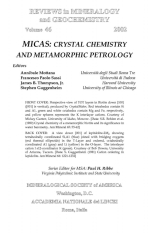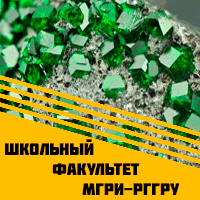Добрый день, Коллеги. Важное сообщение, просьба принять участие. Музей Ферсмана ищет помощь для реставрационных работ в помещении. Подробности по ссылке
Micas: Crystal chemistry and metamorphic petrology / Слюда: Кристаллохимия и метаморфическая петрология
Micas are among the most common minerals in the Earth crust: 4.5% by volume. They are widespread in most if not all metamorphic rocks (abundance: 11%), and common also in sediment and sedimentary and igneous rocks. Characteristically, micas form in the uppermost greenschist facies and remain stable to the lower crust, including anatectic rocks (the only exception: granulite facies racks). Moreover, some micas are stable in sediments and diagenetic rocks and crystallize in many types of lavas. In contrast, they are also present in association with minerals originating from the very deepest parts of the mantle—they are the most common minerals accompanying diamond in kimberlites.
The number of research papers dedicated to micas is enormous, but knowledge of them is limited and not as extensive as that of other rock-forming minerals, for reasons mostly relating to their complex layer texture that makes obtaining crystals suitable for careful studies with the modern methods time-consuming, painstaking work. Micas were reviewed extensively in 1984 (Reviews in Mineralogy 13, S.W. Bailey, editor). At that time, "Micas" volume covered most if not all aspects of mica knowledge, thus producing a long shelf-life for this book. Yet, or perhaps because of thatexcellent review, mica research was vigorously renewed, and a vast array of new data has been gathered over the past 15 years. These data now need to be organized and reviewed. Furthermore, a Committee nominated by the International Mineralogical Association in the late 1970s concluded its long-lasting work (Rieder et al. 1998) by suggesting a new classification scheme which has stimulated a new chemical and structural research on micas. <...>




